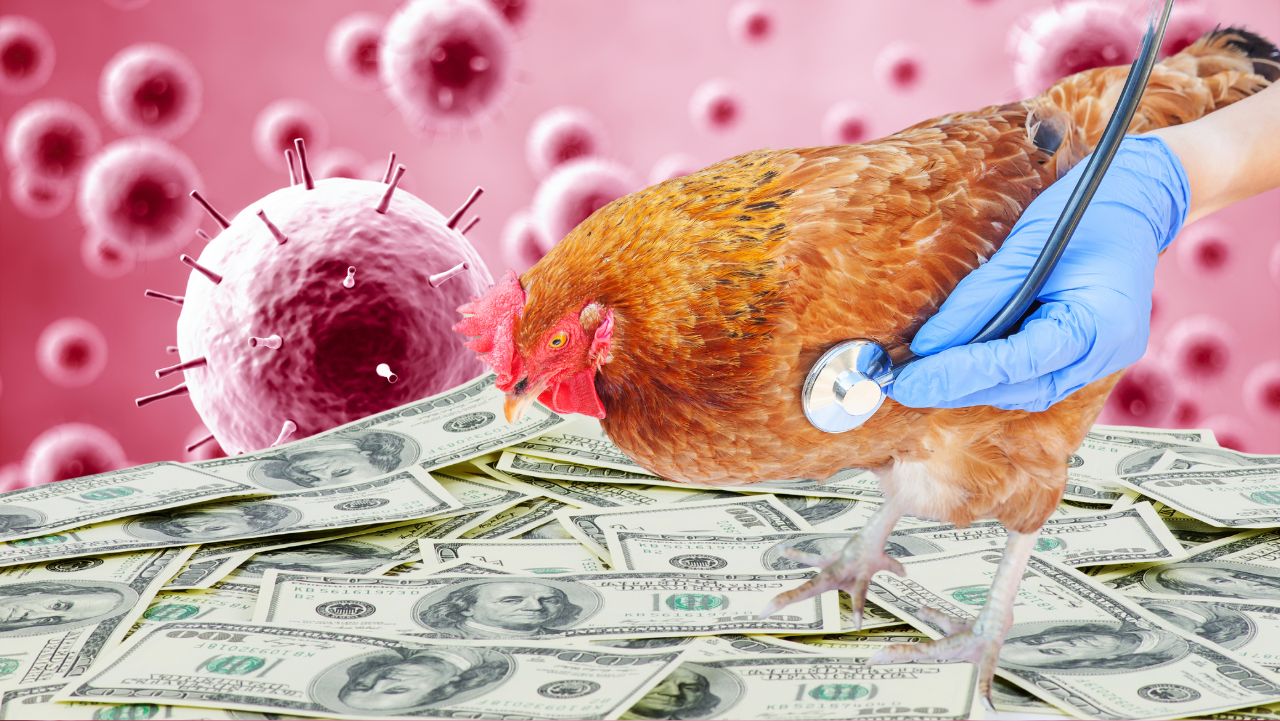Health
U.S. Bankrolling Creation of Deadlier, More Contagious Bird Flu Strains
What could possibly go wrong?

This article originally appeared on The Defender and was republished with permission.
Guest post by John-Michael Dumais
Under the guise of creating bird flu vaccines, U.S. government agencies and private funders like the Bill & Melinda Gates Foundation are bankrolling gain-of-function research to make bird flu viruses more lethal and transmissible among mammals.
U.S. health officials only recently admitted to funding gain-of-function research at the Wuhan Institute of Virology in China — but for decades, the U.S. government has funded the same type of dangerous research on bird flu in the U.S.
And that research continues today.
The Centers for Disease Control and Prevention (CDC), the Biomedical Advanced Research and Development Authority (BARDA), the National Institute of Allergy and Infectious Diseases (NIAID), the U.S. Department of Agriculture (USDA) — even the Bill & Melinda Gates Foundation — have funded or are funding research to make bird flu more pathogenic and/or more transmissible in mammals.
Appearing on the “Kim Iversen Show” on May 16, Brian Hooker, Ph.D., Children’s Health Defense chief scientific officer, said he is concerned the U.S. is “making agents of … biological destruction” that could “put us into another pandemic.”
Hooker echoed warnings by former CDC Director Robert Redfield, who suggested the next pandemic would be sparked by a leak from a lab working to humanize bird flu viruses.
Hooker told Iversen the CDC’s Influenza Division infected ferrets with the currently circulating H5N1 avian influenza strain, then infected human lung cells, to make the virus more infective to humans.
Their justification, he said, is to be prepared for a zoonotic outbreak — where a virus from a bird or other animal jumps to humans.
“The party line that you hear all the time is, ‘Well, we have to develop these pathogens because then we can develop the countermeasures,’ — the vaccines, the monoclonal antibodies, the therapeutics,” he said.
Long list of gain-of-function studies on bird flu
The CDC, BARDA, NIAID and the World Health Organization (WHO) have conducted or funded dangerous bird flu studies.
Jessica Belser, a lead researcher with the CDC, was involved in numerous studies exploring the pathogenicity and transmissibility of bird flu viruses. She is co-author of a March 2024 study on the H5N1 strain causing fatal disease and transmitting between co-housed ferrets.
In 2020, Belser studied how different strains of the H9N2 flu virus, which have genetic and antigenic differences, show varying patterns of replication and transmission in mammalian animal models. The Chinese Center for Disease Control and Prevention was a collaborator.
In 2016, Belser studied how different bird flu strains, including H5N1, H7N9 and H9N2, could infect human pulmonary endothelial cells.
Richard Webby, Ph.D., a BARDA-associated researcher and director of the WHO Collaborating Centre for Studies on the Ecology of Influenza in Animals and Birds, is co-author of a May 2024 paper studying the susceptibility and transmissibility in the pig population of highly pathogenic avian influenza derived from mink.
In a 2017 study funded by the NIAID, Webby tested bird flu vaccines on ferrets, infecting them with the wild virus to determine the vaccines’ efficacy.
Hooker told The Defender this research is dangerous because ferrets “are immunologically very close to humans. … It’s not a huge leap for them to suddenly get into the human population and start human-to-human transmission.”
Christine Oshansky, chief of Pandemic Vaccines and Adjuvants at BARDA, co-authored a 2021 study of highly pathogenic influenza H7N9 and a vaccine formulation.
In 2018, Oshansky tested H5N1 vaccines stored in the national Influenza vaccine stockpile for up to 12 years to determine if they could be effective against divergent A (H5) influenza viruses.
The WHO funded the May 2020 study, “Pandemic potential of highly pathogenic avian influenza clade 2.3.4.4 A(H5) viruses.” Collaborators included the CDC, the Food and Agriculture Organization of the United Nations, the Chinese Center for Disease Control and Prevention, the European Centre for Disease Prevention and Control and other organizations. Webby and Yoshihiro Kawaoka, DVM, Ph.D. of the University of Wisconson are among the listed authors.
“That’s the huge danger of doing this work,” Hooker said. “Whether it’s an accidental or intentional release, you’re playing with these pathogens so that they’re basically creating variants that are infectious in humans.”
The vaccine cash cow
Hooker told Iversen there are “myriad patents associated with bird flu vaccines [and] bird flu pathogens.”
Kawaoka, the researcher long funded by NIAID to conduct bird flu research, has 78 patents in his portfolio, many of them related to bird flu vaccination.
In 2023, Kawaoka filed patents on:
- Mutations that confer genetic stability to additional genes in influenza viruses (US-11802273-B2).
- Recombinant influenza viruses with stabilized HA for replication in eggs (US-11807872 – B2).
- A humanized cell line (US-11851648-B2).
In 2022, Kawaoka filed a patent for influenza virus replication for vaccine development (US-113906-B2).
Richard Bright, former BARDA director and a bird flu researcher at the CDC from 1998-2006, has an “extensive patent portfolio on — you guessed it — bird flu vaccines,” Hooker said. “And so these prophets of doom hit the airwaves and they scare everybody.”
Hooker also noted that Moderna is developing an mRNA-based bird flu vaccine.
U.S. relaxed H5N1 bird flu regulations this month
The U.S. government on May 6 released a new policy to tighten oversight of federally funded research on potentially dangerous pathogens, which won’t take effect until May 2025.
The policy categorizes high-risk research into two groups, requiring risk-benefit assessments and mitigation plans for both, with an additional layer of review for research involving pathogens with enhanced pandemic potential.
The move aims to address concerns about lax oversight and ambiguous guidelines while ensuring that critical research on pandemic preparedness and medical advancements can continue, according to Nature.
In a seemingly contradictory move, U.S. government officials on May 14 temporarily relaxed regulations on how public health laboratories and healthcare facilities handle, store and transport H5N1 bird flu samples, according to Reuters.
This 180-day change comes in response to the recent spread of the virus to dairy cattle in nine U.S. states.
The revised guidance, requested by the Association of Public Health Laboratories, aims to reduce bureaucratic burdens and allow lab staff to focus on testing, preparing for the possibility that the virus could acquire the ability to become easily transmitted among humans.
-

 Health3 days ago
Health3 days agoIt’s Time To Stop the WHO’s Horrific Pandemic Treaty: Here’s How
-

 News3 days ago
News3 days agoAmerican Trapped in Japan Because Wife Can’t Enter U.S. Without COVID-19 Vaccine Proof
-

 News3 days ago
News3 days ago“Calm Down!” – Judge Cannon Scolds Jack Smith’s Prosecutor After He Throws Tantrum, Pounds Fists on Podium
-

 Featured3 days ago
Featured3 days agoThe Enduring Value of Gold: A Century of Stability Amid Dollar Decline





























